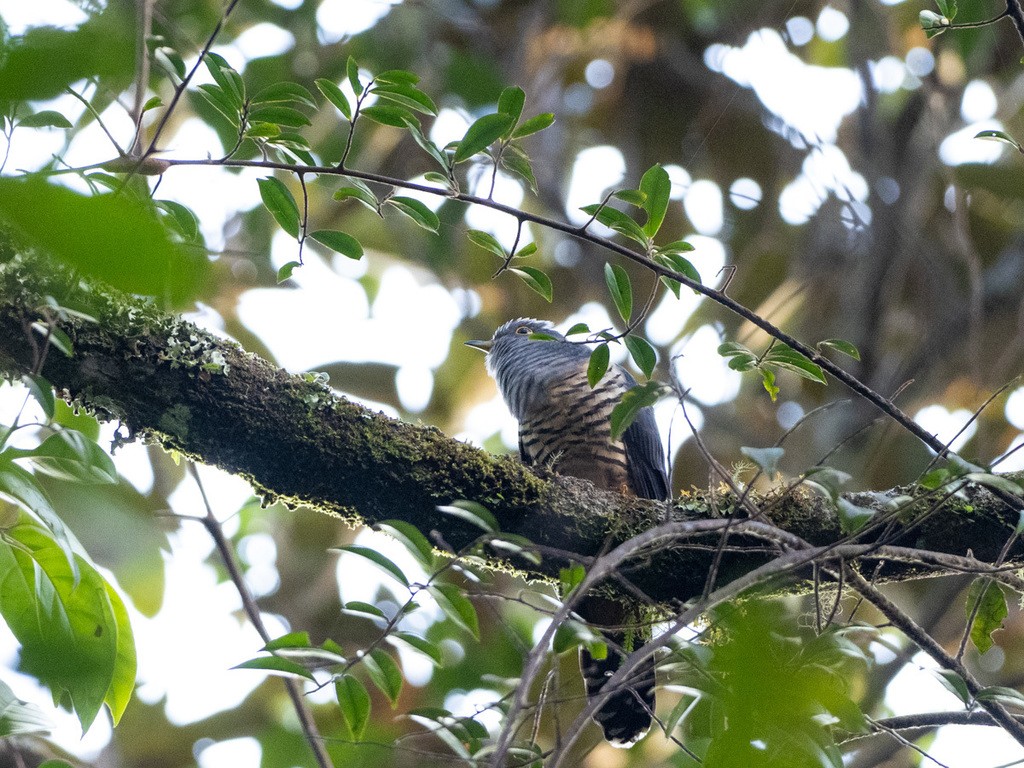Sunda Cuckoo
A species of Typical Cuckoos Scientific name : Cuculus lepidus Genus : Typical Cuckoos
Sunda Cuckoo, A species of Typical Cuckoos
Botanical name: Cuculus lepidus
Genus: Typical Cuckoos
Content
Description General Info
 Photo By bentsai , used under CC-BY-NC-4.0 /Cropped and compressed from original
Photo By bentsai , used under CC-BY-NC-4.0 /Cropped and compressed from original Description
It is 29–30 cm long. The upperparts, throat and upper breast are dark grey. The rest of the underparts are buff with black bars. The tail is blackish with white spots. The female also occurs in a rufous form which has reddish-brown upperparts, paler underparts and black barring both above and below. The Himalayan cuckoo and Oriental cuckoo are similar to the Sunda cuckoo but paler with less buff-coloured underparts and narrower black bars. The song of the Sunda cuckoo usually consists of a short first note followed by two or three longer and lower "hoop" notes. The whole song is higher-pitched than that of the Himalayan cuckoo which gives three or four "hoop" notes. 
Nest Placement
Tree
Feeding Habits
Sunda Cuckoo primarily feeds on insects such as caterpillars, grasshoppers, crickets, cicadas, beetles, flies, and ants, and occasionally consumes fruit. Specific foraging behaviors are not well-documented, but sunda Cuckoo's diet indicates an adept insectivore with potential opportunistic frugivorous tendencies.
Habitat
The sunda Cuckoo is predominantly found in primary and secondary forests that are representative of montane regions. These birds are adapted to forested environments which are dense and diverse in vegetation, often where tree species such as casuarinas are present in the Lesser Sundas. Their habitat preference spans across a broad geographical area that showcases a range of forest ecosystems within these montane landscapes.
Dite type
Omnivorous
General Info
Feeding Habits
Bird food type
Behavior
It feeds mainly on insects, particularly caterpillars, and will also eat fruit. It is a secretive bird which is hard to find except when calling. It is a brood parasite, laying its eggs in the nests of other birds. It has been recorded using the nests of the chestnut-crowned warbler in the Malay Peninsula, mountain leaf warbler and yellow-breasted warbler in Sabah and mountain leaf warbler, Sunda warbler and Sunda bush warbler in Java. The eggs are whitish with brown spots. 
Distribution Area
Its range covers the Malay Peninsula, Borneo, Sumatra, Java, Bali, Seram and the Lesser Sunda Islands east to Timor. It is non-migratory unlike the Himalayan and Oriental cuckoos which overlap in range with it during the northern winter. It occurs in forests, mainly in mountainous areas. It is found at altitudes of 950–1700 m in the Malay Peninsula, 1300–2700 m in Borneo and above 1000 m in Java, Sumatra and Wallacea. It is believed to be slowly declining in numbers but still has a sizable range and population so its status is classed as Least Concern by BirdLife International. 
Scientific Classification
Phylum
Chordates Class
Birds Order
Cuckoos and Relatives Family
Cuckoos Genus
Typical Cuckoos Species
Sunda Cuckoo